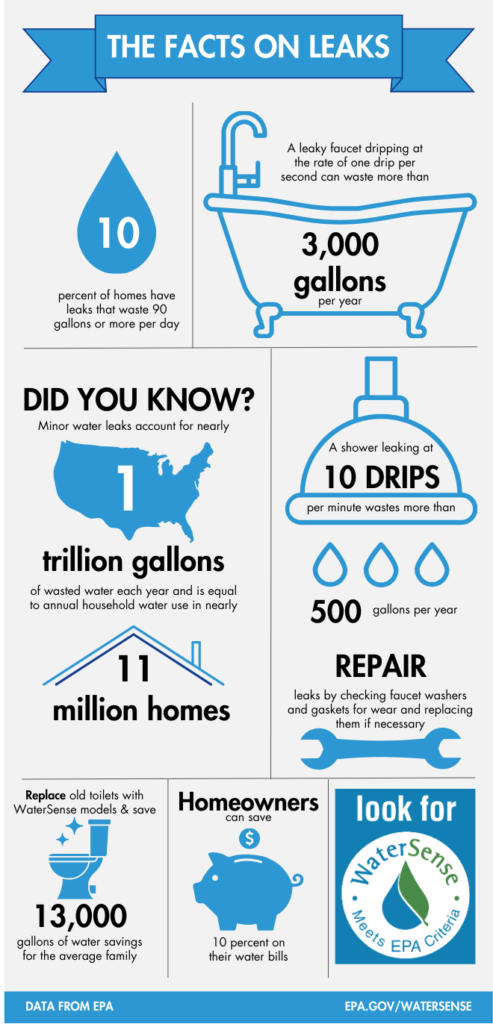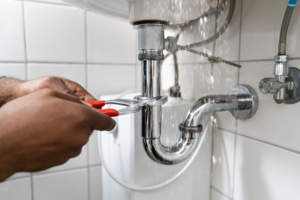If you have just filled your pool, started watering your garden, installed a dishwasher or increased the number of people in your home or business, you can expect a jump in your water usage. But a one-time activity (such as filling your pool) should not permanently increase your bill. Gradually increasing billed volume should alert you to the possibility of a leak in your system. When our meter readers notice a large jump in consumption from the previous month, you will receive a “leak letter” suggesting that you investigate.
Note that a 10 to 25% variation in water use is not unusual. However, if your volume (indicated by the graph on your bill) increases by at least 25% or continues to creep up, and you have no rational explanation, you should try the following:
- Read the water meter, noting the position of the clock-style hand that records individual gallons.
- Wait at least 15 minutes without using water.
- Look at the meter again to see if the hand moved. If it did not, there are probably no leaks. Slow and intermittent leaks can be detected by waiting longer between readings.
- If the meter hand did move, check all faucets for visible leaks.
- Check toilets for leaks by adding food coloring to the water in the tank. Do not flush. Wait 15 minutes to see if the colored water appears in the toilet bowl. If it does, there is a leak.
- If there appear to be no leaks inside your home, check outdoors for underground leaks. Turn off your main valve to the house. Open an indoor faucet to verify that the valve is working. The water flow should stop completely. Check the meter to see if it continues to run. If it does, there is a leak somewhere in your plumbing between the main valve and the meter.
- Repeat the meter reading procedure after making all repairs to ensure that there are no more leaks.



